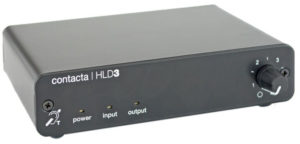Voice Carry Over (VCO)
Voice Carry Over allows people who are deaf or have limited hearing to speak directly to hearing people. When a standard telephone user speaks to you, a Communications Assistant (CA) serves as your “ears” and types everything said where it is displayed on your TTY or special VCO phone.
Volume Control
A device for increasing or decreasing the volume (gain) of a hearing aid or assistive listening device.
VRA
VRS
See Video Relay Service.
Wavelength
Wavelength is the distance between sound (compression) waves and is directly related to frequency—the higher the frequency, the shorter the wavelength. In fact, if you divide the speed of sound in air by the frequency of the sound you are interested in, the result is the wavelength. Human hearing ranges from 20 to about 20,000 Hz. The corresponding wavelengths are 56.3 feet to 0.67 inches.
Wax
See Ear Wax.
WD
Whistling
The feedback sound a hearing aid makes when it does not fit tightly in the ear canal. Often the hard of hearing person does not hear this sound, but it sure annoys the people nearby. Often it is described as a squealing sound.
White Noise
White noise is noise whose amplitude is constant throughout the audible frequency range. The sound of white noise is a high-pitched hissing, similar to the sound of steam escaping from an overheated radiator. White noise is produced by a random noise generator, and is used in tinnitus maskers and in Tinnitus Retraining Therapy. More technically, white noise is defined as sound with equal power per Hz in frequency. Since each successive octave of frequency has twice as many Hz in its range, the power in white noise increases by a factor of two for each succeeding higher octave. Thus, white noise increases by 3 dB per octave in power. Incidentally, our ears hears the high frequency hissing in white noise more than the lower-frequency sounds since the ear is more sensitive to high frequencies. This high-frequency sound tends to grate on the nerves more than lower frequency sounds, so now they are beginning to use the more natural-sounding pink noise in tinnitus maskers and related devices instead of white noise.
Wide Dynamic Range Compression
A special circuit in some hearing aids that compresses a wide range of sounds into a narrower range. This makes soft sounds easier to hear and makes loud sounds more comfortable for listening.
Word Discrimination Testing (WD)
The older term for what is now called Word Recognition Testing.
Word Recognition Testing (WR)
A test that determines how well you can understand single-syllable words when they are heard at your most comfortable level. The results are expressed as a percentage. (See also Discrimination.)
WR
- « Previous Page
- 1
- …
- 22
- 23
- 24


